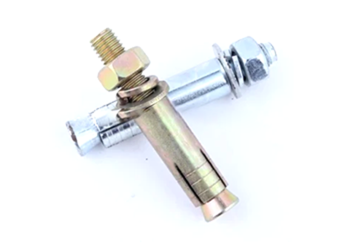Říj . 22, 2024 12:24 Back to list
Galvanized Threaded Rod for Durable Construction and Reliable Fastening Solutions
The Versatility and Strength of Galvanized Threaded Bar
In the realm of construction and engineering, the importance of using durable and reliable materials cannot be overstated. One such material that has gained significant attention in recent years is the galvanized threaded bar. Combining the strength of steel with the protective benefits of galvanization, this product offers a multitude of applications across various industries.
At its core, a threaded bar, also known as a hex bolt or stud, is a long, slender piece of metal that is threaded on both ends. This allows it to be easily secured with nuts, making it an essential component in various structural and mechanical applications. The unique feature of the galvanized threaded bar is its coating of zinc, which serves as a barrier against corrosion. This is particularly advantageous in environments exposed to moisture, chemicals, or saline conditions. The galvanization process involves coating the steel with molten zinc, creating a robust layer that adheres well to the surface, thus prolonging the lifespan of the bar.
One of the significant benefits of galvanized threaded bars is their longevity. Unlike regular steel, which can rust and degrade over time, galvanized bars maintain their integrity even when exposed to harsh environmental conditions. This characteristic makes them particularly valuable in construction projects involving bridges, buildings, and outdoor facilities. For instance, in coastal regions where saltwater can accelerate the corrosion of metal components, using galvanized threaded bars can significantly reduce maintenance costs and extend the service life of the structure.
In addition to their corrosion resistance, galvanized threaded bars are known for their high tensile strength. This makes them ideal for applications that require load-bearing capabilities. They can be found in various structures, from securing steel beams in buildings to anchoring equipment in industrial settings. Their ability to withstand high forces without deforming makes them a preferred choice for engineers and architects alike.
galvanized threaded bar

Moreover, the versatility of galvanized threaded bars extends beyond construction to areas such as manufacturing and automotive industries. In manufacturing plants, they are commonly used in the assembly of machinery and equipment, where reliability and strength are crucial. In the automotive sector, they play a vital role in providing structural integrity and safety features in vehicles.
Installation of galvanized threaded bars is relatively straightforward. They can be easily cut to size and installed using standard tools, making them accessible for both professional contractors and DIY enthusiasts. Additionally, the availability of different sizes and thread specifications ensures that there is a solution for various project requirements.
Though galvanized threaded bars offer numerous advantages, it is important to note that they are not suited for every application. In environments with extreme temperatures or specific chemical exposures, alternative materials such as stainless steel or plastic connectors may be more appropriate. Therefore, it is crucial for engineers and construction professionals to assess the specific demands of their projects before selecting the appropriate materials.
In conclusion, galvanized threaded bars represent a crucial advancement in construction materials, blending strength, durability, and flexibility. Their corrosion-resistant properties, combined with high tensile strength, make them suitable for a wide range of applications across multiple industries. As the demand for reliable construction materials continues to grow, the galvanized threaded bar stands out as a beacon of innovation in the quest for safer and more sustainable building practices. With their myriad benefits, they are set to remain a staple in modern engineering and construction for years to come.


